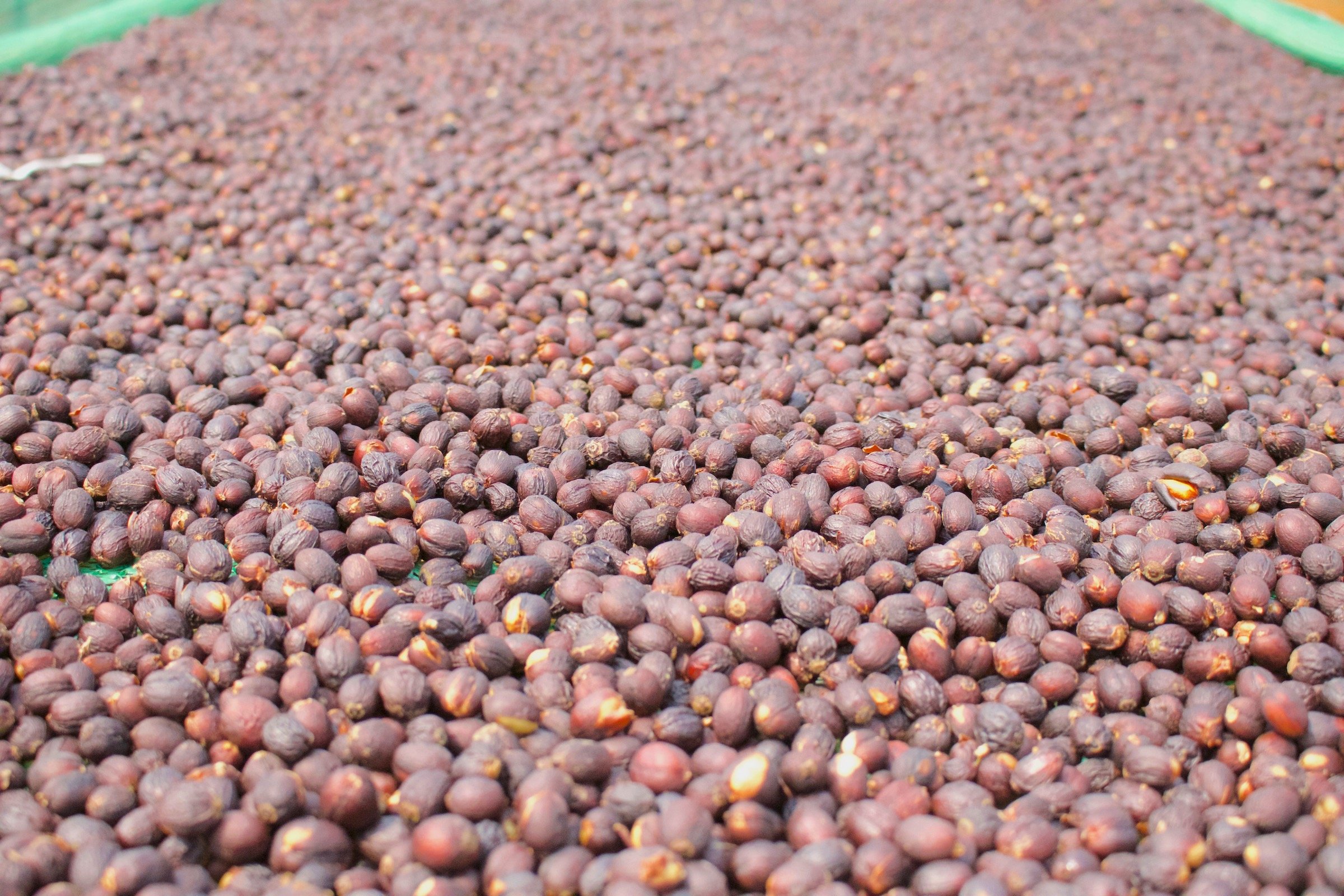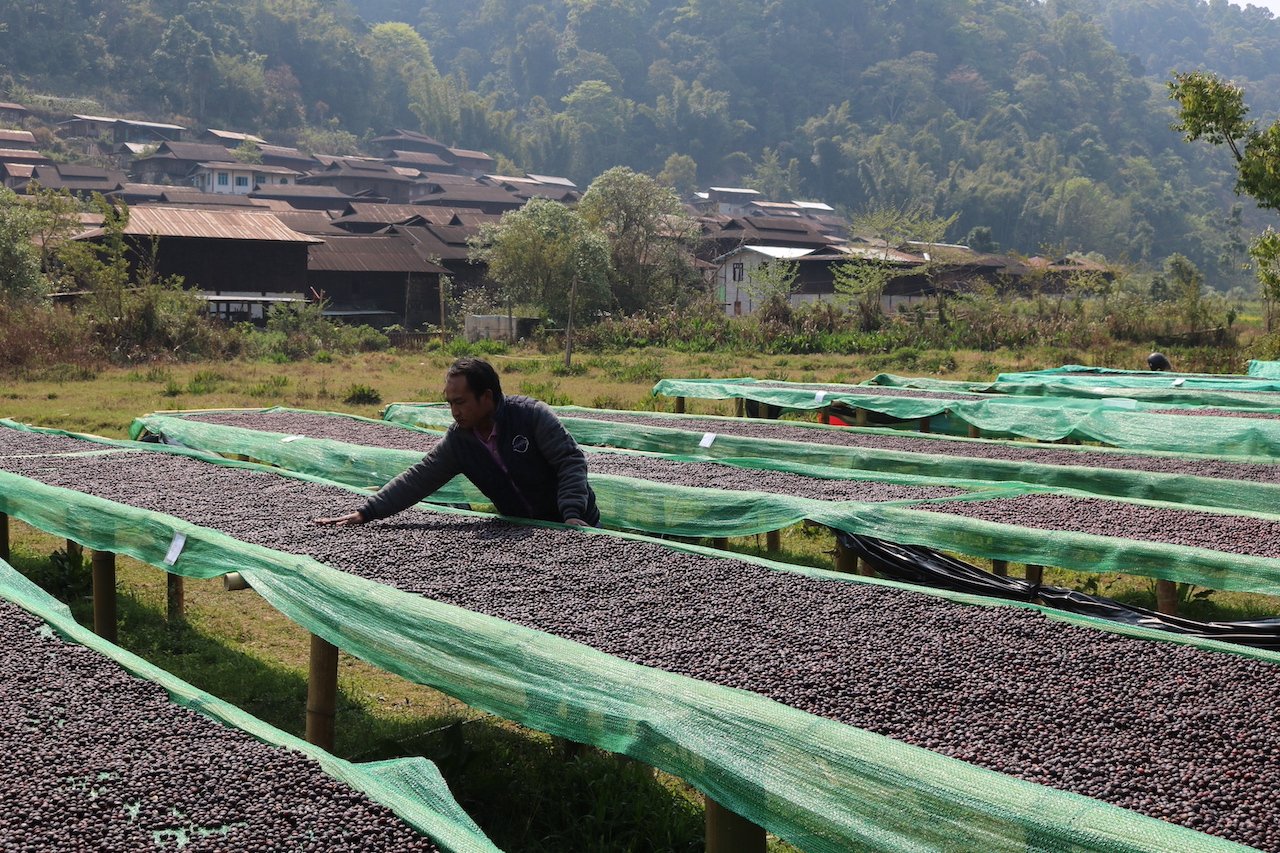
Why dry naturals?
"Myanmar has a competitive advantage over other specialty coffee producing countries. The weather is typically dry and sunny throughout the harvest season, which provides excellent conditions for drying. The terroir produces “clean, sparkling” dry naturals that are unlike any other country. Coffees from one community to the next express different flavor notes, which appeals to curators of micro-lots who seek unique taste experiences."
– Lorene Flaming, from USAID’s Value Chain for Rural Development Report, 2019
A look at dry naturals & their story in Myanmar
Here’s the question on a lot of people’s minds: what exactly are dry naturals? “Dry” or “natural” processing means that coffee cherries are dried whole, rather than fermented or any other process that leaves the fruit on the seed without hulling. This particular process is also the oldest method of processing coffee and, importantly, it neither produces wastewater nor requires significant water resources. Yet the ability to produce consistently high-quality dry naturals is difficult, requiring slow sun-drying (typically between 15-30 days in Myanmar depending on altitude), raised dry beds for better airflow, and frequent turning to ensure the cherries dry evenly.
Marcelo Pereira (black shirt), a coffee quality and processing specialist who stayed on the ground in Myanmar from 2015-2018, was first to present the idea of specialty dry naturals as a perfect fit for Myanmar’s coffee communities.
The idea of dry naturals being a potentially perfect fit for Myanmar was introduced by Marcelo Pereira, a CQI consultant at the time, as part of the USAID-Winrock grant that transformed the country’s specialty coffee sector from 2015-2019. Marcelo, who has expertise producing dry naturals in Yemen and around the world, pitched the idea of promoting community-based, specialty dry naturals because it’s a high-value market niche and doesn’t require high-tech processing equipment or water—which many of the community producers don’t have great access to in their high-altitude villages. While natural processing was previously used in Myanmar’s coffee communities, using this method to reach specialty standards took both some convincing and experimentation.
In a 2015 pilot run that utilized new techniques, the communities with USAID and the CQI team ultimately found that dry natural processing is ideal because the annual cool, dry season (November-April) in Myanmar’s coffee belt times up exactly with harvest time. As detailed by the USAID report, dry naturals are very often tricky because the fruit can ferment or spoil (especially with rainy, humid or overcast conditions), resulting in coffee that tastes sour or yeasty. But, when well crafted like in Myanmar, dry naturals show off a region’s unique terroir. Dry naturals allow the fruit’s sugars and flavors to concentrate in the bean, imparting greater body, less acidity, and fruited notes.
2020s & beyond: the legacy of dry natural processing
This strong foundation has continued until today with most of Myanmar’s specialty coffees. Dry naturals across the country are produced using simple, labor-intensive practices and technologies that avoid complex operations and maintenance requirements (therefore are more resilient) and maximize employment for these communities. It's also the most inclusive model because it can be easily replicated in new villages and communities looking to join—which is the key focus as coffee farmer associations like Shwe Taung Thu, Indigo Mountain and Amayar Women’s Processing Facility continue to grow.
Discover more in the USAID-Winrock report
To get the full story on Myanmar farmers’ specialty coffee transformation, including their enduring success with dry naturals, there’s no better comprehensive source than USAID-Winrocks’s Value Chain for Rural Development Report 2019. Dive into the year-by-year evolution of the specialty coffee value chain in Myanmar—plus check out expert input & reactions from Atlas Coffee Importers, Blue Bottle, This Side Up, and more on the country’s naturally-processed micro-lots.




